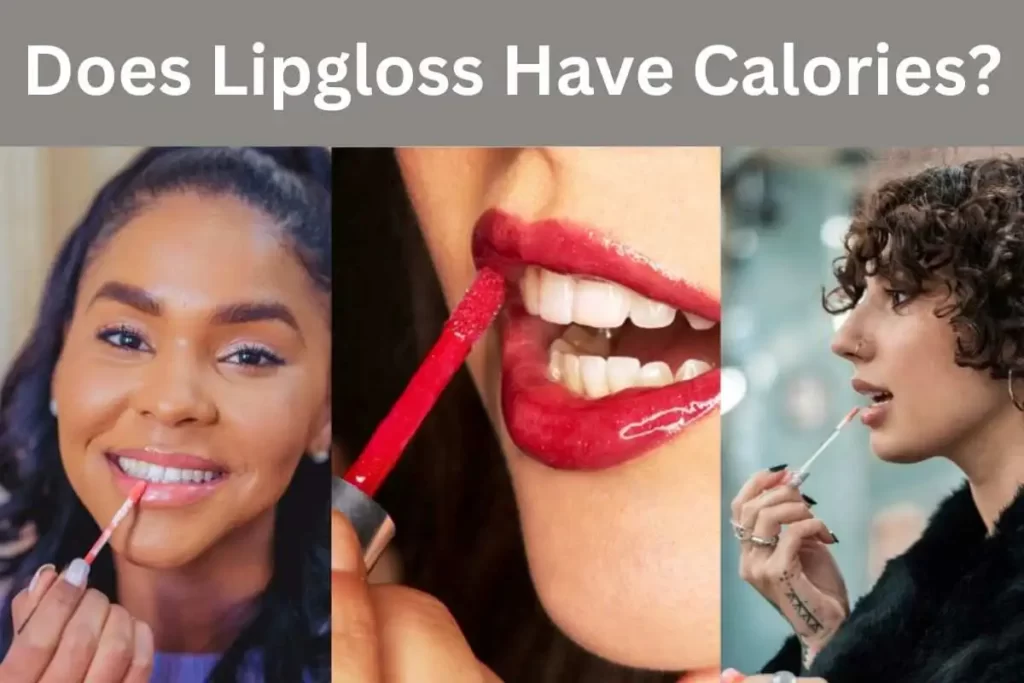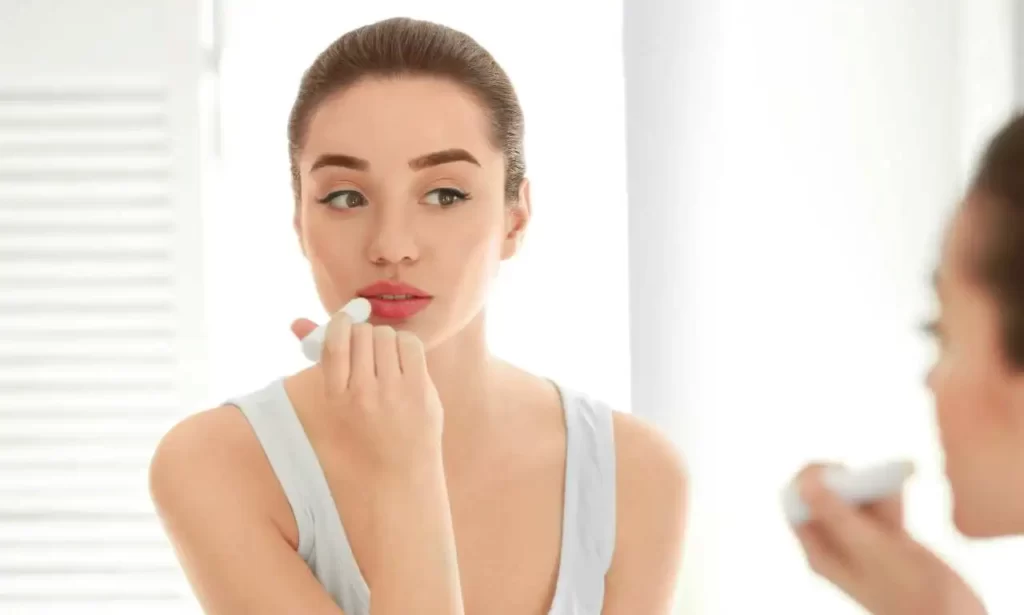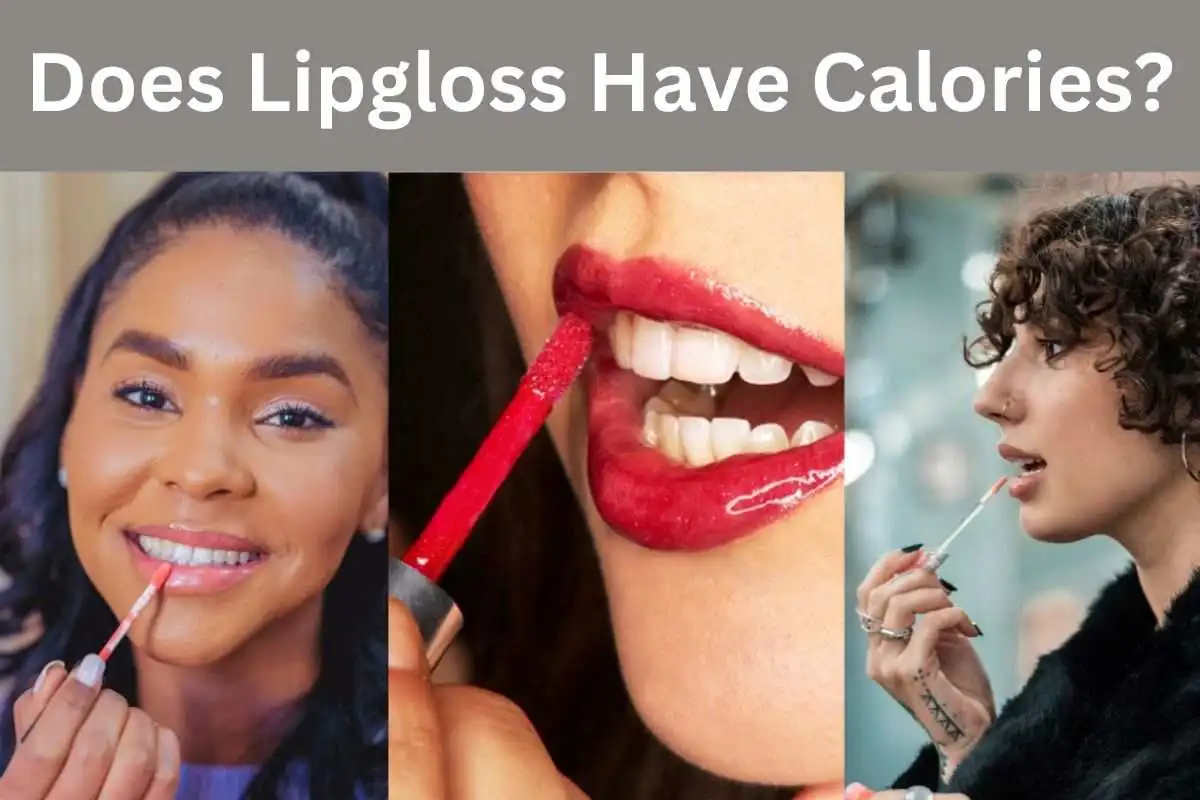Lip gloss, a beloved cosmetic staple, has sparked curiosity regarding its nutritional impact, particularly the query: “Does lipgloss contain calories?”
This inquiry delves into the ingredients of lip gloss formulations, exploring the presence of caloric content within its components.
While lip gloss primarily serves cosmetic purposes, its ingredients, such as oils, emollients, and flavorings, can indeed contain calories.
This article aims to unravel the truth behind this commonly pondered question.
By examining the composition of lip gloss and understanding its intended use, we aim to provide clarity regarding the minimal caloric contribution of lip gloss and its negligible impact on an individual’s daily caloric intake.
Join us on this exploration as we unveil the facts behind the intriguing relationship between lip gloss and calories.

Table of Contents
What is Lip Gloss?
Lip gloss or lipgloss is a cosmetic product designed to enhance the appearance of lips by providing shine, hydration, and sometimes color.
Unlike lipstick, which often offers opaque coverage, lip gloss has a more translucent texture, imparting a glossy finish.
It typically comes in liquid or gel form and is applied using a wand, brush, or directly from a tube.
The primary purpose of lip gloss is to add luster, moisture, and a subtle tint to the lips, creating a more youthful and radiant look.
It often contains a blend of oils, emollients, colorants, and fragrances formulated to give lips a glossy, plump, and alluring appearance.
Lip gloss is a versatile cosmetic product appreciated for its ability to enhance natural lip color or complement other lip makeup.
Does Lipgloss Have Calories?
The answer is yes, lipgloss contains calories. Many of the ingredients used in lip gloss formulations, such as oils and emollients, contain calories due to their fat content.
For example, oils like castor oil or mineral oil contain approximately 9 calories per gram, while emollients like shea butter and cocoa butter also contribute to the caloric content due to their fatty nature.
However, it’s crucial to note that the minuscule amount of lip gloss typically ingested through normal use is negligible in terms of contributing to an individual’s overall caloric intake.
Lip gloss is intended for external application on the lips and is not meant to be consumed in significant quantities.
Therefore, while lip gloss does contain calories, the tiny amount that might inadvertently be ingested during regular use is unlikely to impact one’s daily caloric intake significantly.

Read: Does Chapstick Have Calories?
Is Using Lip Gloss Bad for Weight Loss?
Lip gloss, when used as intended for cosmetic purposes, does not directly impact weight loss.
Lip gloss is an external cosmetic product applied to the lips to enhance their appearance, providing shine, moisture, and sometimes color.
It does not contain ingredients that promote weight loss or have any direct influence on an individual’s body weight.
However, if there’s a concern about unintentional ingestion of lip gloss while wearing it, it’s important to note that the caloric content from the small amount inadvertently consumed is extremely minimal and unlikely to affect weight loss efforts.
Weight loss primarily involves factors such as a balanced diet, regular exercise, adequate hydration, and overall lifestyle choices.
Using lip gloss in moderation for cosmetic purposes should not significantly impact weight loss goals.
Read: Does Vaping Have Calories?
Ingredients in Lip Gloss:
Lip gloss formulations comprise a variety of components carefully selected to achieve the desired texture, shine, and aesthetic appeal.
Understanding these ingredients is fundamental to comprehending the characteristics and effects of lip gloss.
- Base Ingredients: Lip glosses commonly contain a base composed of oils such as castor oil, mineral oil, or lanolin. These oils serve as the primary element that contributes to the glossy texture of the product.
- Emollients and Moisturizers: To ensure the lips remain hydrated and smooth, lip glosses often incorporate emollients and moisturizing agents like shea butter, cocoa butter, or beeswax. These ingredients prevent dryness and chapping, providing a soft and supple feel to the lips.
- Colorants and Pigments: Some lip glosses are tinted and may contain pigments or dyes to impart color. These colorants can be derived from both natural and synthetic sources and are responsible for the various shades available.
- Flavorings and Fragrances: Enhancing the user experience, lip glosses sometimes include flavorings or fragrances. These additives can be derived from natural extracts like vanilla, mint, or fruit essences or created synthetically to offer pleasant tastes or scents upon application.
- Preservatives: To prolong shelf life and prevent bacterial growth or oxidation, preservatives like parabens or antioxidants are commonly included in lip gloss formulations.
The precise combination and concentration of these ingredients vary among different lip gloss brands and formulations, contributing to the diverse range of textures, finishes, and effects available in the market.
Understanding these components empowers users to make informed choices based on their preferences and needs.
Why People Use Lip Gloss?
People use lip gloss for several reasons, primarily for its ability to enhance the appearance of lips.
Lip gloss offers a glossy, shiny finish that makes lips look fuller and more luscious. It provides hydration, keeping lips moisturized and preventing dryness or chapping.
Additionally, lip gloss adds a touch of color, either subtly enhancing the natural lip shade or providing a more pronounced tint.
Its versatility allows for effortless application, making it an ideal option for a quick touch-up or a natural, everyday look.
Furthermore, lip gloss complements various makeup styles, from casual to glam, and offers an easy way to add a hint of glamour and allure to one’s overall appearance.
Also Read: Can Braces Make Your Teeth Fall Out? (7 Reasons).
How Can You Avoid Overindulging With Lip Gloss?
Avoiding overindulgence with lip gloss primarily involves understanding its intended use and practicing mindful application:
- Use Lip Gloss Sparingly: Apply only the necessary amount of lip gloss to achieve the desired look. A little goes a long way, and excessive application may lead to unintentional ingestion.
- Be Mindful of Ingestion: Lip gloss is meant for external use on the lips. Avoid licking or rubbing your lips together excessively after application to prevent inadvertently ingesting the product.
- Choose Safe Formulations: Opt for lip glosses from reputable brands known for safe and non-toxic formulations. Avoid products with potentially harmful ingredients or those known to cause irritation.
- Check Ingredients: Be aware of the ingredients in your lip gloss. Avoid products containing components you may be allergic to or those that could cause adverse reactions.
- Regularly Replace Old Products: Lip glosses have a shelf life. Dispose of old or expired lip glosses to prevent potential risks associated with using products beyond their recommended use-by date.
- Educate Yourself: Stay informed about the potential risks associated with ingesting cosmetic products. Understanding the limitations of lip gloss as a cosmetic can help you use it more responsibly.
By practicing moderation, being mindful of the product’s intended use, and choosing safe and quality formulations, you can enjoy using lip gloss without the risk of overindulgence or potential health concerns.
Side Effects of Lip Gloss
While lip gloss is generally safe for external use, some individuals may experience certain side effects:
- Allergic Reactions: Some people might be allergic to specific ingredients in lip gloss formulations, resulting in itching, redness, swelling, or irritation on the lips.
- Dryness or Chapping: Although lip glosses aim to moisturize, some formulations might contain ingredients that, for certain individuals, could lead to dryness or exacerbate chapping.
- Breakouts Around the Lips: Ingredients like fragrances or preservatives might cause acne or skin reactions around the lip area in sensitive individuals.
- Inadvertent Ingestion Risks: Continuous licking or ingestion of lip gloss may result in ingesting small amounts, which, if done regularly, could cause stomach discomfort or potential health issues due to the ingestion of cosmetic ingredients.
To minimize these risks, perform patch tests, choose products free from known allergens, and use lip gloss as directed to avoid potential side effects.
How to Avoid Side Effects of Using Lip Gloss
To prevent potential side effects when using lip gloss, consider the following precautions and practices:
- Patch Test: Before using a new lip gloss, perform a patch test on a small area of your skin (like the wrist or forearm) to check for any allergic reactions or irritation.
- Choose Quality Products: Select lip glosses from reputable brands known for safe and high-quality formulations. Look for products that are hypoallergenic, fragrance-free, and free from known irritants.
- Read Ingredient Labels: Be aware of the ingredients present in the lip gloss. Avoid products containing substances you may be sensitive to or have had allergic reactions to in the past.
- Moisturize Lips: Prioritize lip care by regularly moisturizing your lips, especially if you have a tendency towards dryness or chapping. This can help mitigate any potential drying effects of certain lip gloss formulations.
- Use Sparingly: Apply a moderate amount of lip gloss to avoid over-application, which might lead to unintentional ingestion or potential irritation.
- Avoid Ingestion: Be mindful not to lick or consume lip gloss intentionally. This reduces the risk of ingesting the product and experiencing any related discomfort or adverse reactions.
- Replace Expired Products: Dispose of old or expired lip glosses to prevent using formulations that might have degraded or become less stable, potentially causing adverse effects.
By adopting these precautions, you can minimize the likelihood of experiencing side effects associated with lip gloss usage and enjoy its cosmetic benefits safely.
Does Lip Gloss Have Any Health Benefits?
Lip gloss primarily serves cosmetic purposes and is not formulated or marketed as a health product. However, some of its ingredients may offer certain benefits for lip health:
- Moisturization: Many lip gloss formulations contain emollients like shea butter, cocoa butter, or oils that help hydrate the lips, preventing dryness and chapping.
- Protection: The application of lip gloss can create a barrier between the lips and external elements, such as harsh weather conditions or UV radiation, potentially offering a degree of protection.
- Enhanced Appearance: By providing shine and a glossy finish, lip gloss can make lips appear fuller, smoother, and more alluring, enhancing one’s overall look and boosting confidence.
While lip gloss contributes to cosmetic enhancement, any perceived health benefits primarily relate to the moisturizing and protective properties offered by its moisturizing ingredients.
However, it’s crucial to note that lip gloss is not a substitute for dedicated lip care products designed explicitly for therapeutic or medicinal purposes.
For specific lip health concerns or issues, it’s advisable to consult with a healthcare professional or dermatologist for proper guidance and treatment.
Conclusion
So, does lipgloss have calories? The straightforward answer is yes. Lip gloss contains ingredients that carry caloric content, notably oils and emollients rich in fats.
However, the minute quantity ingested through regular use is inconsequential in terms of impacting one’s daily caloric intake.
Lip gloss is intended for external application on the lips and is not intended for consumption.
Understanding the ingredients and intended use of lip gloss helps discern its minimal impact on overall caloric intake.
While it does contain calories, the tiny amount inadvertently ingested during normal use is unlikely to significantly affect one’s diet or health.
Ultimately, lip gloss remains a cosmetic accessory appreciated for enhancing the appearance of lips, offering shine, moisture, and sometimes color.
Embracing moderation and using lip gloss responsibly for its intended purpose allows individuals to enjoy its cosmetic benefits without concerns about its negligible caloric contribution.
FAQs:
Yes. Lip oil formulations often contain oils with caloric content due to their fat content.
However, the minimal amount of lip oil ingested during regular use is unlikely to significantly impact one’s daily caloric intake.
Lip oil is intended for external application on the lips to provide hydration and is not meant to be consumed in substantial quantities.
No. Lipstick, used for cosmetic purposes, does not contain significant caloric content.
While it might contain ingredients with minimal caloric content, the tiny amount ingested during normal use is negligible and would not significantly impact one’s daily caloric intake.
Lipstick is intended for external application on the lips and is not meant for consumption.
No. Toothpaste, designed for oral hygiene, is not a food product and is not intended for ingestion.
While it may contain trace amounts of ingredients with caloric content, the negligible amount ingested during brushing would not significantly contribute to one’s daily caloric intake.

